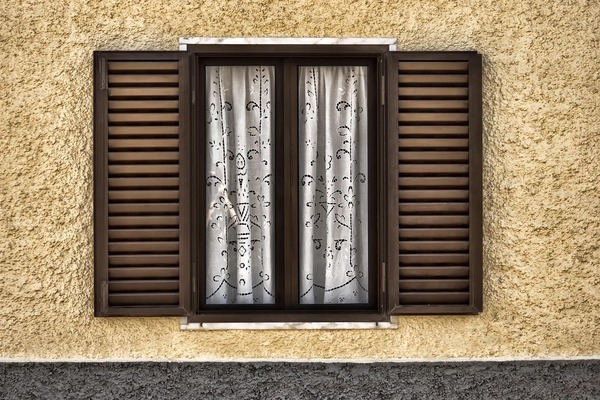
Window blinds: how to choose the right ones
Window blinds are an important part of any home. They provide privacy and security for your home and can also add style and colour. But with so many different types of window blinds on the market, how do you know which ones are right for you? This article will help you choose the right window blinds for your home.
Difference between blinds and shades
Rather than being made of wood, metal, or a composite, blinds tend to have a hard, industrial look and feel; shades are generally made from fabric, so they give the room a softer look.
Things to look out for when purchasing blinds and shades:
Light and privacy: Define whether you want your room bright, airy, or more "buttoned up" and cosy, based on how much sunlight you want to enter the room. If window shades are open, the white fabric brightens the room; if they're closed, the curtains reflect light more evenly. You'll discover both light-filtering and dark-room options with vinyl shades.
Your Budget: Are you outfitting just one room, or the entirety of your house? Consider the option to spend extra money on select window treatments and scale back on others. Window treatments are priced by size, so large treatments will cost more. Extra customized treatments and materials with unique patterns and features will also add to the cost.
Cordless styles: Cordless styles are best if you have kids. Accidental strangulation is a top concern for parents with young children.
Cleaning: Blinds do not necessarily need professional cleaning, but they can be dust magnets. To make the task easier, use Swiffer's 360° Duster (it's an electric toothbrush holder). Shades made of textured textiles and weaves tend to conceal dirt better but cleaning them requires careful attention—you can vacuum surface and spot-clean larger messes, but it's best to rely on professionals.
Your decorating style: Are you into decorating for a sit-down dinner, informal dinner, conversation party, dance, or shower? Bold colours can be reckless, classy, stylish, or exhilarating, while subtle hues are relaxing and elegant. Would you like to include corded light fixtures or deal with cordless and sleeker models?
Different types of window blinds may have some noteworthy differences. Here are some details about typical blind types:
Tilting slats are the great choice if you'd like light to be able to shine in (or not). They offer a beautiful, smooth appearance, and the ability to protect your privacy very well. The price of blinds follows a hierarchy: vinyl, aluminium, faux wood (or textured vinyl), and wood.
However, you don't just have to shade the window with draperies as you do with curtains — the whole surface of the window can be covered for a refined look, even when slats are open. Pleasant in the bathroom or bedroom, you can leave the blinds down for privacy but easily adjust them according to your needs for light. The main problem, however, is that you often need to focus more on retaining the blinds for privacy than leaving them open.
Wood blinds come in light and dark finishes — our GH line ranges from white Country Cottage to rich Peruvian Walnut — and are perfect for offices and dens. They're unsuitable for kitchens or baths (choose polymer or faux wood instead), or for bedrooms or living rooms where you want a softer, more romantic effect.
Energy-saving blinds perform an essential part in managing your electricity expenses by obstructing daylight and keeping the heat in your house. Our GH branded assortment of energy-saving blinds is available in several types.
When searching for blinds, keep in mind that wider horizontal slats offer the decor of larger windows and more room in apartments and small rooms. Vertical blinds are appropriate for practically all windows, regardless of whether they are wider or taller. They're a great selection for picture windows with a scenic view or for sliding glass doors.
Blinds and Shades Safety
Manufacturers are doing their part to make blinds and shutters safer; because the dangerous cords are a hazard to small children, it's important not to use them.
Warning first: When cords are an option, do not leave dangling cords within reach of children's hands.
Measuring blinds and shades is a skill you should master.
Knowing the dimensions of your windows will make it easier for you to make wise decisions when making a purchasing decision. For that inside-mount window blind to stop at the corner of the measuring tape, so should yours. The same tip applies for outside-mounted formats as well, making sure to include the dimensions of the frame for the measuring tape.
Wrap up!
In conclusion, there are many factors to consider when choosing the right window blinds. By understanding the different types of blinds and their benefits, as well as the appropriate applications for each, you can confidently select the perfect set of blinds for your home.
Sun Blinds is a reputable company in western Canada offering excellent sun blinds and coverings to customers in the region. Established in 2003, we're focused on enabling us to offer the best sun blinds and coverings possible, offering a wide selection of established and custom blinds and coverings. We install and customize your blinds to the exact dimensions you require.
Follow Us On




